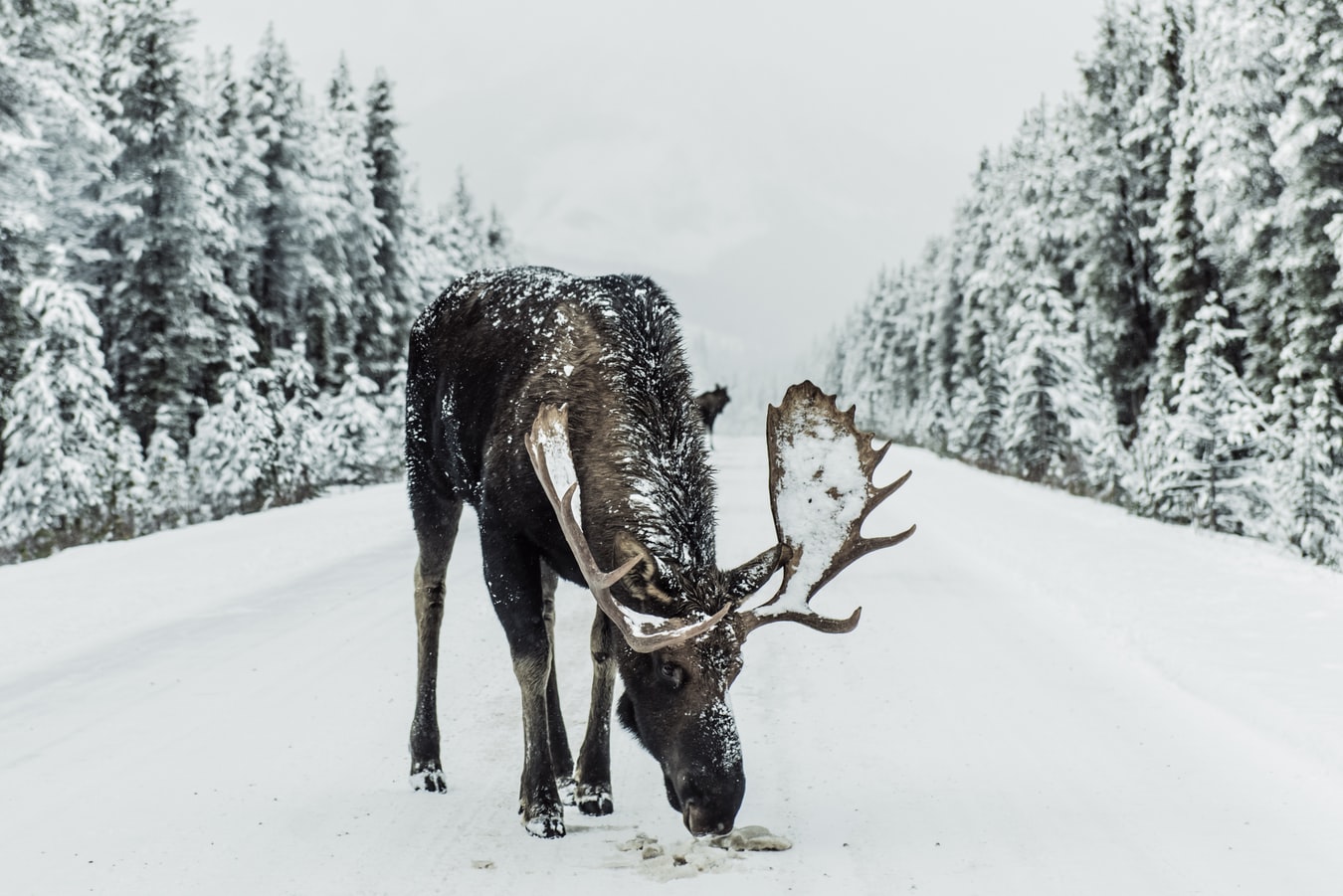By Scott Shindlede DAILY INTER LAKE
ASSOCIATED PRESS
KALISPELL — This year was a dark one for Montana hunters and lovers of wild game meat with the announcement that, for the first time, a wild elk and a wild moose were found infected with chronic wasting disease.
CWD is a contagious neurological disease that infects deer, elk and moose. There is no known cure, and it is fatal to infected animals. Animals may be infected for up to two years before showing any symptomatic signs of infection.
While there is no known transmission of chronic wasting disease to humans or other animals, including pets or livestock, the Centers for Disease Control and Prevention recommends that hunters harvesting a deer, elk, or moose from an area where CWD is known to be present have their animal tested for CWD prior to consuming the meat, and to not consume the meat if the animal tests positive.
After the disease turned up in white-tailed deer in the state in 2017, most observers believed it was just a matter of time before two of the state’s most sought-after game animals tested positive for CWD.
It proved to be true, the Daily Inter Lake reports.
Wildlife officials say they don’t know where the disease originated, but it has been found in free-ranging populations of either deer, elk or moose in 24 states and two Canadian provinces, including Saskatchewan and Alberta.
In Canada, the disease was first detected on a Saskatchewan elk farm in 1996.
According to an article published by a team from the Center for Infectious Disease Research and Policy at the University of Minnesota, movement of infected live deer, elk and moose has also been implicated in the spread of the disease among North American deer and elk farms, with 10 states (Iowa, Michigan, Minnesota, Missouri, Montana, New York, Ohio, Oklahoma, Pennsylvania, and South Dakota) and three provinces (Alberta, Quebec, and Saskatchewan) detecting their first CWD cases.
The article was published on MBio, an open-access journal, by the American Society for Microbiology.
In Canada, officials are testing for the disease in British Columbia, but it has not been found there.
According to the CDC, chronic wasting disease was first detected in 1967 in a captive mule deer at a Colorado research facility. It was first discovered in wild deer in 1981. By the 1990s, it had been reported in surrounding areas in northern Colorado and southern Wyoming.
Officials say it is possible the disease may also occur in other states without strong animal surveillance systems, but that cases haven’t been detected yet. Once CWD is established in an area, the risk can remain for a long time in the environment. The affected areas are likely to continue to expand.
CDC officials say nationwide the overall occurrence of CWD in free-ranging deer and elk is relatively low. However, in several locations where the disease is established, infection rates may exceed 10 percent, and localized infection rates of more than 25 percent have been reported. The infection rates among some captive deer can be much higher, with a rate of 79 percent reported from at least one captive herd.
In the Libby CWD Zone, it’s at 40 percent. Forty-nine positives, out of 1,207 samples, were collected there since April 2019.
Concerns of those living in Libby and Lincoln County are growing.
State Rep. Steve Gunderson, the District 1 representative from Libby and a member of the state Environmental Quality Council, said not getting a handle on chronic wasting disease could be devastating to Libby’s economy.
“Lincoln County is one of the premier hunting destinations in Montana and with CWD being such a devastating disease to deer, elk and moose, it could really devastate our economy here that relies on hunting,” Gunderson said.
Gary Halvorson, manager of Libby Sports Center, said that hunters and those businesses that depend on the money hunters spend should be very concerned about the future.
“It’s definitely a concern and we should be concerned,” Halvorson said. “Hearing it was found in a moose is not good. They’ve already taken a hit in their numbers.”
As for elk, Halvorson said their numbers in his part of Northwest Montana seem pretty good.
“But CWD, we do not want that to happen,” he said. “No one really knows what the future holds.”
The economic impact is significant.
According to 2016 studies by Montana Fish, Wildlife and Parks, deer, elk and antelope hunters spent an estimated $324 million. That money supported more than 3,300 jobs.
Montana Fish, Wildlife & Parks Region 1 information and education specialist Dillon Tabish said that while the disease’s immediate impact isn’t on a large scale, “it could take 20 to 40 percent of a herd out in a decade and that would affect future opportunities for hunters.”
Tabish said chronic wasting disease is still manageable now, but it’s an inconvenient disease for hunters.
“It’s work to harvest an animal, bone out the meat, but then find out the animal tested positive,” Tabish said. “If it isn’t managed properly, it could become a more significant issue.”
Overall, according to numbers from Montana Fish, Wildlife & Parks, more than 7,000 animals have been sampled statewide, and 131 tested positive for CWD in 2019. The disease has now been detected across much of Montana.
In Region 1, which includes Northwest Montana and Flathead, Lake, Lincoln and Sanders counties, 1,412 samples were collected with 50 positive results in 2019.
According to Tabish, the vast majority of samples, 1,207, were collected in the Libby CWD Management Zone, while the other 207 were taken at Region 1 headquarters in Kalispell.
The other positive was a bull moose harvested by a hunter near Pulpit Mountain west of Quartz Creek and north of Troy, just one-half mile outside the Libby CWD zone, 12 miles from the center of Libby.
Wildlife officials are still trying to understand the significance of the positive test on the moose.
“We’re not sure what it means,” Tabish said. “Moose are much more solitary animals than deer, so the odds are lower of transmission.”
There were two other voluntary moose samples that FWP collected and submitted for testing at the research lab in Fort Collins, Colorado. Both tested negative.
Tabish said because of moose’s solitary nature they tend to forage independently from others of their species, which may help to prevent exposure.
Moose in Montana have been reported susceptible by Fish, Wildlife & Parks in the past due to warming temperatures, predation, parasites and diseases.
“We are hopeful this won’t have management implications,” Tabish said.
Currently, hunters who have harvested an animal that tests positive for CWD can get a replacement license. But with test results taking 2 to 3 weeks to come back, a hunter is often left with little or no opportunity to seek another.
“There has some been discussion of the replacement license being valid into the next year, but no decisions have been made yet,” Tabish said.
As for elk, the one animal that tested positive was a female taken by a hunter on private property by the landowner northeast of Deer Lodge in the Deer Creek area between Belfy and Bridger.














